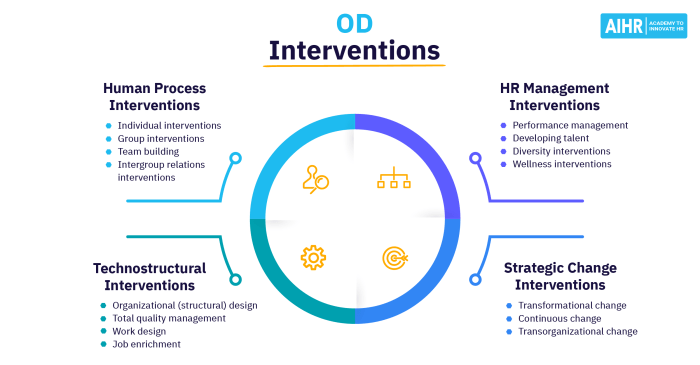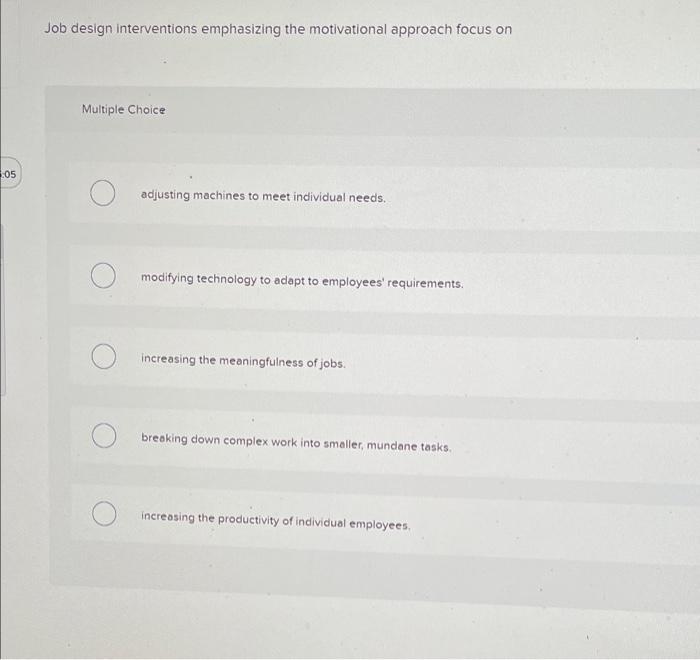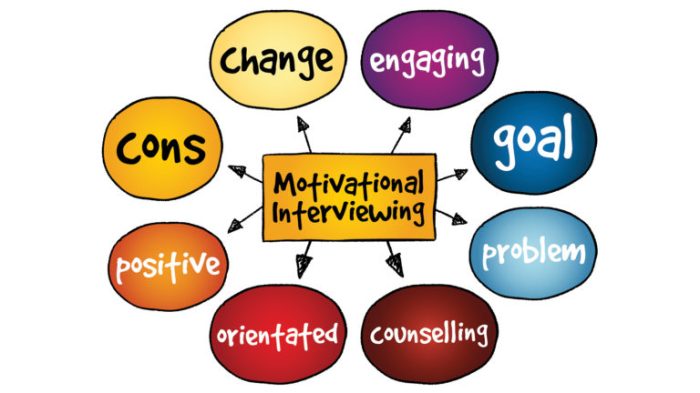Job design interventions emphasizing the motivational approach focus on empowering employees and enhancing their intrinsic motivation. By incorporating principles of job enlargement, enrichment, and rotation, organizations can create work environments that foster employee engagement, satisfaction, and productivity.
This approach recognizes the importance of aligning job characteristics with employee needs and aspirations, leading to increased job autonomy, responsibility, and growth opportunities. The benefits of motivational job design extend beyond employee well-being, positively impacting organizational performance and innovation.
Overview of Job Design Interventions with a Motivational Approach
Job design interventions are deliberate changes made to the content, organization, and relationships of jobs to enhance employee motivation and satisfaction. These interventions focus on the intrinsic aspects of work, aiming to create jobs that are challenging, meaningful, and provide opportunities for growth and development.
A motivational approach to job design emphasizes the importance of satisfying employees’ higher-order needs, such as the need for autonomy, competence, and purpose. This approach seeks to create jobs that allow employees to experience a sense of ownership, control over their work, and a connection to the overall mission of the organization.
Key Principles of Motivational Job Design
The key principles of motivational job design include:
- Job enlargement:Expanding the scope of a job by adding tasks that are similar in nature to the employee’s current responsibilities.
- Job enrichment:Increasing the depth of a job by assigning tasks that require higher levels of skill, responsibility, and decision-making.
- Job rotation:Periodically moving employees between different jobs to provide them with exposure to a wider range of tasks and experiences.
These principles aim to increase employee motivation by providing opportunities for variety, challenge, and autonomy, which are all factors that have been shown to contribute to job satisfaction and performance.
Methods for Implementing Motivational Job Design Interventions

There are several methods that can be used to implement motivational job design interventions, including:
- Task analysis:Identifying the specific tasks that make up a job and their relationship to each other.
- Job crafting:Allowing employees to tailor their jobs to better fit their interests, skills, and career goals.
- Employee involvement:Engaging employees in the process of designing their jobs, which can lead to greater buy-in and commitment.
These methods can help to ensure that job design interventions are tailored to the specific needs of the organization and its employees.
Benefits and Challenges of Motivational Job Design Interventions

Motivational job design interventions have the potential to provide several benefits, including:
- Increased employee motivation and satisfaction
- Improved job performance
- Reduced employee turnover
- Enhanced organizational agility and innovation
However, there are also some challenges that can arise during the implementation of motivational job design interventions, such as:
- Resistance from employees who are accustomed to traditional job structures
- Difficulty in identifying and implementing appropriate job design changes
- Potential for increased costs associated with training and development
It is important to carefully consider the potential benefits and challenges before implementing motivational job design interventions.
Case Studies and Examples of Successful Motivational Job Design Interventions: Job Design Interventions Emphasizing The Motivational Approach Focus On

There are several case studies and examples of organizations that have successfully implemented motivational job design interventions.
One example is the Swedish automaker Volvo, which implemented a job rotation program that allowed employees to move between different jobs on the assembly line. This program resulted in increased employee satisfaction and reduced absenteeism.
Another example is the software company Google, which allows employees to spend up to 20% of their time on projects of their own choosing. This policy has been credited with fostering innovation and creativity among Google employees.
Future Trends and Innovations in Motivational Job Design Interventions

There are several emerging trends and innovative approaches in motivational job design, including:
- The use of technology to automate routine tasks and free up employees to focus on more challenging and meaningful work.
- The adoption of agile work practices, which allow employees to work in more flexible and collaborative ways.
- The rise of remote work, which can provide employees with greater autonomy and control over their work.
These trends are likely to continue to shape the future of job design and have a significant impact on the way that employees experience work.
Questions and Answers
What are the key principles of motivational job design?
The key principles include job enlargement (increasing task variety), job enrichment (adding more challenging and meaningful tasks), and job rotation (periodically moving employees to different tasks or roles).
How do motivational job design interventions benefit organizations?
These interventions can enhance employee engagement, job satisfaction, motivation, and productivity, leading to improved organizational performance and innovation.
What are the challenges of implementing motivational job design interventions?
Challenges may include resistance from employees or managers, lack of resources, and the need for ongoing monitoring and evaluation.
